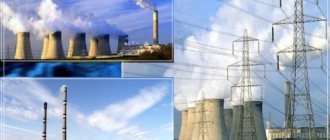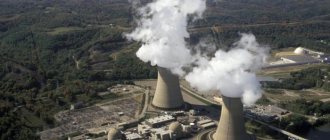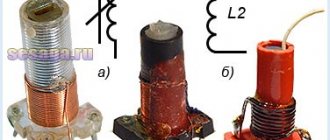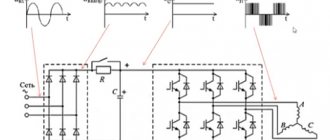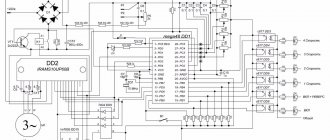The operating principle of a combined heat and power plant (CHP) is based on the unique property of water vapor - to be a coolant. In a heated state, under pressure, it turns into a powerful source of energy that drives the turbines of thermal power plants (CHPs) - a legacy of the already distant era of steam.
The first thermal power plant was built in New York on Pearl Street (Manhattan) in 1882. A year later, St. Petersburg became the birthplace of the first Russian thermal station. Oddly enough, even in our age of high technology, thermal power plants have not yet found a full-fledged replacement: their share in the world energy sector is more than 60%.
And there is a simple explanation for this, which contains the advantages and disadvantages of thermal energy. Its “blood” is organic fuel - coal, fuel oil, oil shale, peat and natural gas are still relatively accessible, and their reserves are quite large.
The big disadvantage is that fuel combustion products cause serious harm to the environment. Yes, and the natural storehouse will one day be completely depleted, and thousands of thermal power plants will turn into rusting “monuments” of our civilization.
Principle of operation
To begin with, it is worth defining the terms “CHP” and “CHP”. In simple terms, they are sisters. A “clean” thermal power plant - a thermal power plant is designed exclusively for the production of electricity. Its other name is “condensing power plant” - IES.
Combined heat and power plant - CHP - a type of thermal power plant. In addition to generating electricity, it supplies hot water to the central heating system and for domestic needs.
The operation scheme of a thermal power plant is quite simple. Fuel and heated air—an oxidizer—simultaneously enter the furnace. The most common fuel at Russian thermal power plants is crushed coal. The heat from the combustion of coal dust turns the water entering the boiler into steam, which is then supplied under pressure to the steam turbine. A powerful flow of steam causes it to rotate, driving the generator rotor, which converts mechanical energy into electrical energy.
Next, the steam, which has already significantly lost its initial indicators - temperature and pressure - enters the condenser, where after a cold “water shower” it again becomes water. Then the condensate pump pumps it into the regenerative heaters and then into the deaerator. There, the water is freed from gases - oxygen and CO2, which can cause corrosion. After this, the water is reheated from steam and fed back into the boiler.
Different types of power plants
Details Category: Energy
Created: 04 November 2016
Electricity can be generated using the kinetic energy of water, the thermal energy of the sun and coal, or from nuclear energy, which is released by fissioning nuclear fuel. Read on to learn about the different types of power plants that use one of many resources to generate electricity.
Energy is an important requirement for us. From air conditioners to cool the air to fueling our cars, our daily lives depend on energy. The need for energy has led many countries to war, and it continues to be a bone of contention among many nations. Insufficient power (energy) supply is one of the main reasons paralyzing the economy. Strong energy shows high rates of economic growth and prosperity of any nation. Energy comes in various forms. The most convenient of all is electrical energy. And it can also be created in a number of different ways, using different types of power plants. Although the word 'generated' is commonly used in conjunction with the term 'energy', energy cannot be created or destroyed. We can simply change the form of energy. In power plants, the energy that is available in a particular form is converted into another form.
How do gas powered thermal power plants work?
Compared to coal-fired thermal power plants, thermal power plants with gas turbine units are much more compact and environmentally friendly. Suffice it to say that such a station does not need a steam boiler. A gas turbine unit is essentially the same turbojet aircraft engine, where, unlike it, the jet stream is not emitted into the atmosphere, but rotates the generator rotor. At the same time, emissions of combustion products are minimal.
TPP and CHP: differences
Often people confuse these two concepts. CHP, in fact, as we found out, is one of the types of thermal power plants. Such a station differs from other types of thermal power plants primarily in that part of the thermal energy it generates goes to boilers installed in the premises to heat them or to produce hot water.
Also, people often confuse the names of hydroelectric power stations and state district power stations. This is primarily due to the similarity of abbreviations. However, a hydroelectric power station is fundamentally different from a state district power station. Both of these types of stations are built on rivers. However, at a hydroelectric power station, unlike state regional power plants, it is not steam that is used as an energy source, but the water flow itself.
New coal combustion technologies
The efficiency of modern thermal power plants is limited to 34%. The vast majority of thermal power plants still operate on coal, which can be explained quite simply - coal reserves on Earth are still enormous, so the share of thermal power plants in the total volume of electricity generated is about 25%.
The process of burning coal has remained virtually unchanged for many decades. However, new technologies have come here too.
Clean burning of coal (Clean Coal)
The peculiarity of this method is that instead of air, pure oxygen isolated from the air is used as an oxidizing agent when burning coal dust. As a result, a harmful impurity – NOx – is removed from the flue gases. The remaining harmful impurities are filtered out through several stages of purification. The CO2 remaining at the outlet is pumped into tanks under high pressure and subject to burial at a depth of up to 1 km.
"oxyfuel capture" method
Here, too, when burning coal, pure oxygen is used as an oxidizing agent. Only in contrast to the previous method, at the moment of combustion, steam is formed, causing the turbine to rotate. Then ash and sulfur oxides are removed from the flue gases, cooling and condensation are performed. The remaining carbon dioxide under a pressure of 70 atmospheres is converted into a liquid state and placed underground.
Pre-combustion method
Coal is burned in the “normal” mode - in a boiler mixed with air. After this, ash and SO2 - sulfur oxide are removed. Next, CO2 is removed using a special liquid absorbent, after which it is disposed of by burial.
What are the requirements for thermal power plants?
A thermal power plant is a thermal power station where electricity is generated and consumed simultaneously. Therefore, such a complex must fully comply with a number of economic and technological requirements. This will ensure uninterrupted and reliable supply of electricity to consumers. So:
- thermal power plant premises must have good lighting, ventilation and aeration;
- the air inside and around the plant must be protected from contamination by solid particles, nitrogen, sulfur oxide, etc.;
- water supplies should be carefully protected from the ingress of wastewater;
- Water treatment systems at stations should be waste-free.
Five of the most powerful thermal power plants in the world
The championship belongs to the Chinese thermal power plant Tuoketuo with a capacity of 6600 MW (5 power units x 1200 MW), occupying an area of 2.5 square meters. km. It is followed by its “compatriot” - the Taichung Thermal Power Plant with a capacity of 5824 MW. The top three is closed by the largest in Russia Surgutskaya GRES-2 - 5597.1 MW. In fourth place is the Polish Belchatow Thermal Power Plant - 5354 MW, and fifth is the Futtsu CCGT Power Plant (Japan) - a gas thermal power plant with a capacity of 5040 MW.
Surgut GRES-2
Advantages of TPP
A thermal power plant is thus a station whose main type of equipment is turbines and generators. The advantages of such complexes include primarily:
- low cost of construction compared to most other types of power plants;
- cheapness of the fuel used;
- low cost of electricity generation.
Also, a big advantage of such stations is that they can be built in any desired location, regardless of the availability of fuel. Coal, fuel oil, etc. can be transported to the station by road or rail.
Another advantage of thermal power plants is that they occupy a very small area compared to other types of stations.
Power plants and their role in the energy supply system
The article analyzes various power plants as sources of energy supply, showing the advantages and disadvantages of traditional and alternative energy. It is shown that large power plants are still focused on traditional energy sources. Alternative energy already plays an important role in the energy supply of small decentralized consumers.
Key words: power plants, energy supply, traditional energy, alternative energy sources
The experience of any developed state indicates that the well-being of its people directly depends on the energy they consume, since energy is the basis that ensures not only the development of the state’s economy, but also the comfort of people’s lives. Energy supply is one of the factors in the normal functioning of the population.
The development of global energy until 2035 will primarily focus on meeting the needs of a growing population, the need to combat climate change, and the “global hunt” for energy resources. The main driver of counteracting climate change is energy decarbonization, which has become one of the determining factors in shaping global energy development trends.
Electric energy, due to its versatility and mobility, is in growing demand, and in recent years, many complex problems have accumulated in the global energy sector that require effective and quick solutions. Among them, the priority is the problem of reliable and high-quality energy supply.
Scientists agree that we should expect a “revolution” in the world energy sector, which is associated with an innovation leap (the introduction of nucleosynthesis technology in solids (“cold nuclear fusion”), the use of hydrogen, helium, etc.). Growing competition in global energy markets opens up wide opportunities for choosing sources and supply routes of primary energy resources and optimizing the energy mix.
The International Energy Agency (IEA) has declared the arrival of a “golden era of gas” – as the most environmentally friendly of fossil fuels and one that produces minimal CO2 emissions and meets decarbonization goals. At the same time, against the background of relatively high prices for hydrocarbons, attention will increase to new ways of using coal and nuclear fuel to generate electricity and heat. Particular attention should be paid to the role of renewable types of energy (RES), the cost of production of which is rapidly approaching the level of the cost of traditional types of energy and by 2022 RES in many developed countries of the world will become more competitive (without any government support).
The purpose of the work is to determine the place and role of power plants in the energy supply system in the context of global trends in the development of energy sources.
The traditional method of generating and transporting electrical energy uses powerful power plants of various types. Thermal power generation requires less capital investment (2–3 times) with higher current costs for electricity production (1.5–2 times) compared to nuclear power. Strategic planning of the production balance between these types of generation should be determined not only by economic, but also by two other safety aspects. Regarding the energy aspect, an imbalance in favor of any type of generation that exceeds 50% of the total production is undesirable. From an environmental point of view, in addition to the general disadvantage - a significant level of water consumption - both types have their own fundamentally irreversible disadvantages: thermal energy - significant emissions of carbon dioxide and other harmful substances into the atmosphere, nuclear energy - the generation of radioactive waste (RAW). Moreover, the last drawback can be compensated for by reliable localization of radioactive waste, which, under normal operation conditions, provides nuclear energy with a significant advantage over thermal energy [2]. At the same time, the main disadvantages of nuclear energy, although fundamentally avoidable, include the significantly more significant consequences of possible accidents compared to other types of generation.
Large-scale plans for the construction of nuclear energy facilities (mainly in China, India, South Korea and Russia) indicate an expansion of its presence in the global energy sector in the foreseeable future [3]. It should be noted that despite certain environmental risks associated with the dangers of the nuclear industry, it has been able to occupy an appropriate competitive position in the energy sector, in most cases due to relatively positive technical and environmental indicators. It should be noted that the price of nuclear energy is less dependent on external factors compared to hydrocarbon sources, nuclear energy is low carbon and cost effective. The development of nuclear energy in the world is stimulated by the possibility of dual use of nuclear materials (for energy production and weapons of mass destruction). However, despite the obvious objective benefits from the use and development of nuclear energy in general, problems remain, in particular the disposal of waste (especially high-level and radioactive waste), which complicate the further development of this area. Today there are ways to solve these problems, but most countries have not yet reached a consensus on this issue.
Despite the fact that traditional sources account for the lion's share of the total energy production, the share of alternative energy is increasing every year, as population growth (primarily in India and China) and rising living standards lead to increased demand for energy resources in the long term. perspective.
According to forecasts, subject to a significant increase in energy efficiency, global demand for energy resources in 2035, compared to 2015, will increase by 37%. The projected pace of global energy consumption will be somewhat slower, due to the end of the period of rapid growth in energy demand in Asian countries. Almost all of the projected demand growth (96%) will occur in non-OECD countries, where energy consumption will grow by 2.2% per year during the study period, compared to 0.1% in OECD countries, where from 2030 consumption levels will begin to decline gradually. Fossil fuels (oil, natural gas and coal) will continue to meet the majority of the world's needs during this period - no other energy source can match them in availability, efficiency and scale of production, despite that their share will decrease from 86% in 2015. up to 81% in 2035. The fastest growing fossil fuel in consumption will be gas (+ 1.9% growth per year), the growth rate of coal will significantly decrease (since 2000 growth was at 3.8% per year) - to + 0.8%, oil will only slightly outpace coal (+ 0.9% per year). By 2035, the shares of fossil fuels (coal, oil and gas) will cluster around 28%. In OECD countries, the shares of coal and oil in total energy consumption will decline at a rapid pace. This decline is compensated by an increase in the shares of renewable energy sources and natural gas. Among non-fossil fuels, the share of renewable energy sources will grow the most (+ 6.3% per year), ahead of nuclear power in the early 2020s and hydropower in the early 2030s. Share of renewable energy sources in 2035 in global consumption will be 8% (in 2014 3%). According to the forecasts of experts from the World Energy Council, the total installed capacity of power plants in the world will increase from 4000 GW in 2006 to 10,000 GW in 2030, while the installed capacity of power plants based on renewable energy sources will double [4].
Today, the cost of electricity produced by mini- and micro-hydroelectric power plants is lower than the cost from traditional sources. And the cost of electricity produced by wind power plants (WPPs) is practically at the level of the cost of electricity generated by combined cycle gas turbine stations, which have high efficiency indicators among traditional power systems. However, the energy produced from photovoltaic cells of solar stations is still 4–5 times higher than the cost of energy from traditional sources. Due to the rapid development of the industry, the cost of electricity from renewable energy sources may drop to the cost from other sources in the next 5–10 years.
In the context of an increasing share of electricity generated by large basic thermal and nuclear power plants, hydroelectric power plants are an optimal addition to them as maneuverable power. The high level of use of renewable hydropower resources in developed countries is due to the advantages of hydroelectric power plants (HPPs). In connection with the introduction of large basic thermal power plants and nuclear power plants into the integrated energy systems, the role in ensuring reliable energy supply for highly maneuverable hydroelectric power plants and pumped storage power plants, covering the peak part of the load schedule and performing the functions of emergency and loading reserves of the power system, has sharply increased. Extensive accumulated experience, advances in design and calculation methods, improvement dam designs and technologies for their construction, which ensured increased reliability and efficiency of dams, opened up new opportunities for the widespread use of hydropower resources, and made it possible to build hydroelectric power stations with high dams and large reservoirs in various natural conditions, including complex engineering and geological conditions, high seismicity.
In the renewable energy market, a promising segment is geothermal energy - energy in the form of heat that is accumulated in the earth's surface and which can be extracted and used for human benefit. Its main advantages compared to other alternative types of energy are its availability almost anywhere in the world and the constancy of the heat source in the earth’s crust. At modern GeoPPs, the power utilization factor reaches 90%; during the operation of such power plants, there is no emission of carbon dioxide into the atmosphere [1, p. 136]. But this method of generating electrical energy uses chemicals that cause enormous damage to the environment.
Geothermal energy is now widely used in more than 40 countries around the world for more than 50 years for heating and cooling homes, agriculture, tourism, medical treatment, electricity generation, etc. The situation varies from country to country depending on the development of geothermal technologies. Uses range from power generation using high temperature dry rocks (Iceland, Italy, Greece, Turkey), to the use of hydrothermal resources in sedimentary basins (France, Germany, Poland, Italy, Hungary, Romania and others). In 2014, the world's first (Iceland) industrial geothermal power plant was built, the heat source of which is the Earth's magma [6].
A promising type of power plant is tidal power plant, which uses the energy of sea waves to generate electricity. But their installed capacity utilization factor is 24–26%, and peak generation often occurs at night, when network consumption is at its minimum. To harness the energy of the tides, dams are built across the mouth of the river, blocking the incoming and outgoing flow. Currently, although there are reliable technologies for using the energy of the tides, tidal power plants are very expensive, so there is only one main tidal power station (located at the mouth of the river) Rance is on the northern coast of France and produces 240 MW of electricity. The theoretical potential of tidal energy in Russia is estimated at more than 100 GW. The use of tidal energy can reduce the need for nuclear energy and the associated radiation risks. However, changes in tidal flows can lead to negative consequences for aquatic ecosystems and coastlines, as well as for navigation and recreation.
During 2000–2015 In the EU countries, the largest increase in the installed capacity of power plants was demonstrated by such types of renewable energy as wind and solar - the total installed capacity over 15 years amounted to 116 and 88 GW, respectively. At the same time, there is a steady trend towards the decommissioning of traditional energy technologies using fossil fuels. The fastest development in the world is observed in the field of wind energy. Wind power plants (WPPs) are complexes of modern equipment consisting of a wind generator with a capacity of 100 Watt to 10 MW, a charge controller, a set of batteries and a voltage inverter. WPPs are designed to convert clean natural wind energy into electricity. At the end of 2015, the installed capacity of wind power plants (WPPs) amounted to 432.2 GW. The leaders in this area are China, the USA, Germany, Spain, and India. Wind energy is developing rapidly in France - 9.2 GW of installed capacity, which corresponds to about 7% of the total power plant capacity in this country [5]. As for the development of solar photovoltaic systems (PVS) in the world, the leaders in this area are Germany - 38.2 GW; China - 28.1 GW; Japan - 23.3 GW; Italy - 18.5 GW; USA - 18.3 GW. [7] Thus, in Germany in July 2014, the same amount of electricity was produced using photovoltaic systems as at nuclear power plants. Separately, attention should be paid to France, a traditionally “nuclear” state, in which the total capacity of solar power plants is 5.6 GW.
The main way to maintain the level of electricity production and its further increase is the use of traditional types of generation - thermal, nuclear and hydropower. The volume of use of renewable energy sources is constantly growing, significant funds are spent on the development of new technologies and technical means of their application. This is facilitated by the environmental friendliness of using geothermal, solar, wind, tidal and other power plants compared to thermal ones.
Literature:
- Renewable energy: problems and prospects // Issue 3. Materials of the Scientific session of the Institute of Geothermal Problems, dedicated to the Day of Russian Science. Makhachkala. February 7–8, 2014 / Ed. Doctor of Technical Sciences A. B. Alkhasova - Makhachkala: IP Ovchinnikov (ALEF), 2014. - 158 p.
- The future of nuclear energy. MIT Interdisciplinary Research / ed. ed. Stephen Ansolabehere, John Deutch etc. // [Electronic resource]. — Access mode: https://www.seu.ru/programs/atomsafe/books/FAE1.pdf
- World Nuclear Association: official website. Access mode: https://www.world-nuclear.org/
- World Energy Council: official website. Access mode: https://www.worldenergy.org/
- Global Wind Energy Council: official website. Access mode: https://www.gwec.net/
- Geothermal Energy News & Information - . Access denied: https://www.renewableenergyworld.com/geothermal-energy.html
- World Energy Outlook Special Report 2015: Energy and Climate Change - Executive Summary - . Access denied: https://www.iea.org/Textbase/npsum/WEO2015SUM.pdf
Non-traditional sources of electricity
Non-traditional sources are represented by geothermal power plants (Fig. 1), operating on thermal energy coming from the bowels of the earth. The deeper from the earth's surface, the higher the temperature of this layer. In Russia, such installations were built in Kamchatka and the Kuril Islands.
There are designs of tidal power plants (Fig. 2), which operate from the energy created by the ebb and flow of tides at the narrowest point of an artificial bay, cut off from the sea. An example is the experimental Kislogubskaya TPP, built on the Kola Peninsula.
The classification of power plants includes solar and wind alternative installations (Fig. 3). All types of such systems provide electricity to small enterprises and industries and are used in the private sector to meet domestic needs. Basically, these are areas and places where there is no centralized power supply and there is no possibility of connecting to ordinary power lines.
Power is a key parameter of a household power plant
The main technical parameter of any power plant is power. Manufacturers of household power plants indicate a maximum power level that is achieved only in short periods of time. To calculate the actual power level, it is necessary to additionally take into account the power factor. Actual performance is usually less than the maximum and is determined in kilowatts.
Household power plants of different types have the following power:
- Gasoline: 15-20 kW
- Diesel: up to 3000 kW
Generators with different outputs differ from each other in size, weight, cost and other parameters. When choosing a household power plant, you should consider all the characteristics together, including the efficiency indicated in the documentation provided for the unit.
Classification
All power plants are divided into the following groups:
- Thermal power plants. The types of natural fuel used in them make it possible to divide them into heating and condensing stations.
- Pumped storage and hydraulic power plants operate using the energy of falling water.
- Nuclear power plants use the energy of nuclear transformations.
- Diesel power plants.
- Thermal power plants with combined cycle or gas turbine units.
- Solar power plants.
- GEOTES (geothermal power plants).
- Tidal stations.
These types of power plants use heat and electricity to operate.
The most convenient type is electrical energy. The conversion of primary energy into it is carried out at power plants.
Advantages and disadvantages of hydroelectric power plants
In terms of their importance, hydroelectric power plants are in second place after thermal power plants. In their work, they use the energy of water, which is converted into electric current and is a renewable resource. Simple management of such stations does not require a large number of personnel. The efficiency reaches up to 85%.
Electricity produced at hydroelectric power plants is considered the cheapest, its price is approximately 5-6 times less than at thermal power plants. Hydroelectric power plants are highly maneuverable and can be put into operation within 3-5 minutes, while thermal power plants require several hours. This quality is especially important when covering peak loads in the daily power supply schedule.
The main disadvantages of such structures are:
- Significant capital investments for their construction.
- Binding to a specific territory or area with water resources.
- During the construction process, vast territories are flooded, large agricultural areas are put out of use, fisheries are damaged, and the ecological balance is disrupted.
- The full power of the power plant is realized only at certain times of the year, during the period of maximum water rise.
Entire cascades of hydroelectric power stations are being built on Russian rivers. The Angara-Yenisei cascade is considered the largest, including the Bratsk, Krasnoyarsk, Sayano-Shushenskaya, Ust-Ilimsk hydroelectric power stations, as well as the Volga cascade with the Rybinsk, Uglich, Ivankovsk, Saratov, Volzhskaya and other hydroelectric power stations.
A pumped storage power plant (PSPP) is considered a fairly promising area. Their operation is based on the operating principle associated with the cyclic movement of the same volume of water between the upper and lower pools. At night, due to excess electricity, water is supplied from the bottom up, and during the day, with a sharp increase in energy consumption, it is dumped down and rotates the turbines, producing electricity. These stations are completely independent of natural fluctuations in river flow, and much less flooded areas are required for reservoirs.
Thermal power plants - TPP
Thermal power plants in Russia produce approximately 70% of all electrical energy. They run on fuel oil, gas, coal, and in certain areas peat and shale are used.
All thermal power plants can be divided into two main types. The first option is the so-called steam turbine, where the primary engine is a steam turbine. These devices can be condensing power plants (CHP), which produce only electricity, and combined heat and power plants (CHP), which produce not only electricity, but also heat. The efficiency factor of thermal power plants is 60-70%, while for CES this figure is 30-40%. The main disadvantage of thermal stations is their mandatory connection to heat consumers.
Thermal power plants have much more positive qualities. They are freely located in all areas where natural resources are available and are not subject to seasonal fluctuations in weather conditions. However, the fuel used is not renewable, and the installations themselves negatively affect the environment. Russian thermal power plants do not have sufficiently effective systems for purifying exhaust gases from harmful and toxic substances. Gas installations are considered more environmentally friendly, but the pipelines laid to them cause irreparable harm to the environment.
Power plants located in the European part of the Russian Federation operate mainly on fuel oil and natural gas, while in the eastern regions they are located near open-pit coal deposits. Most of the installations belong to state district power plants - state district power plants, which are part of the country's Unified Energy System.
